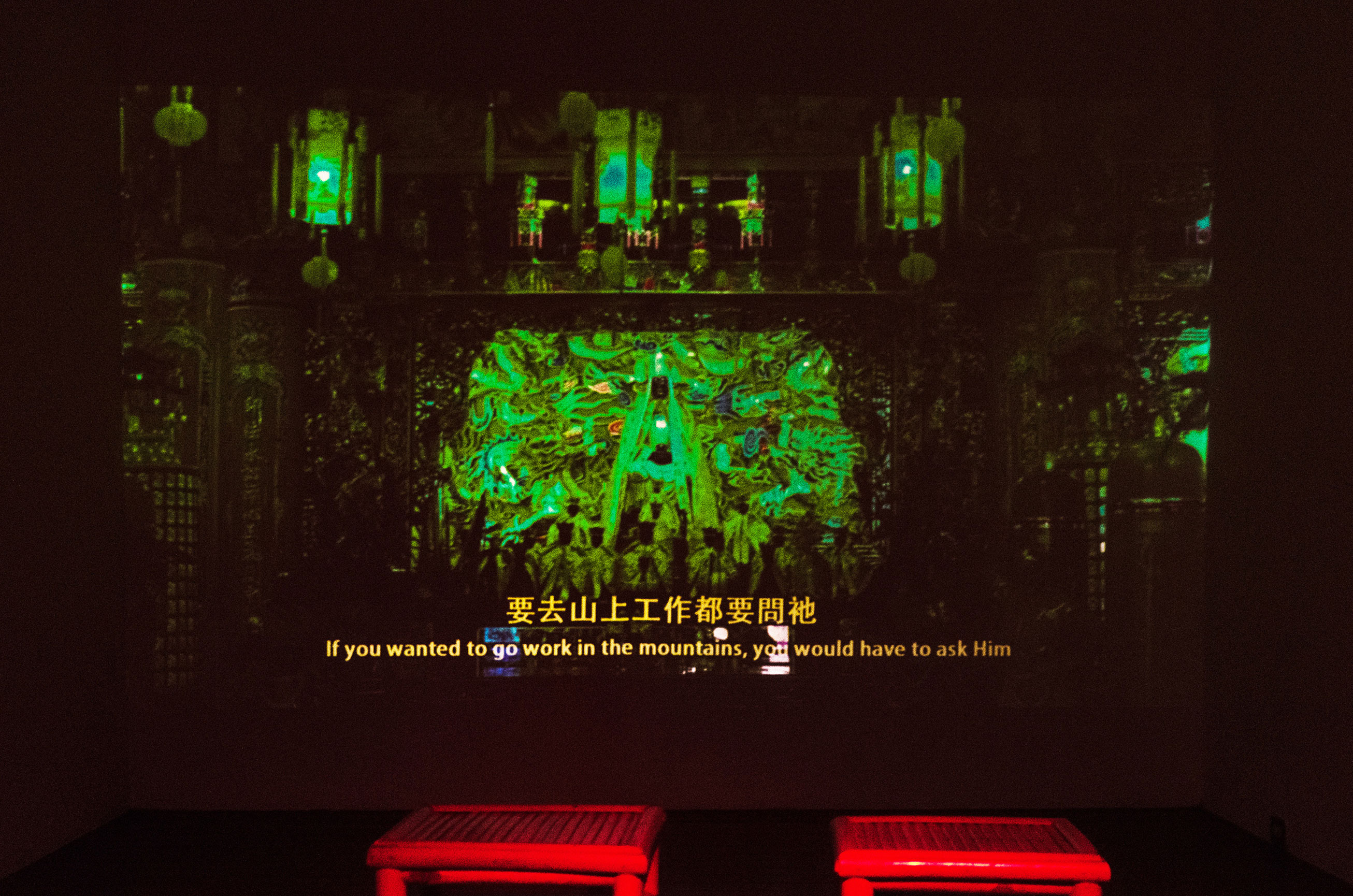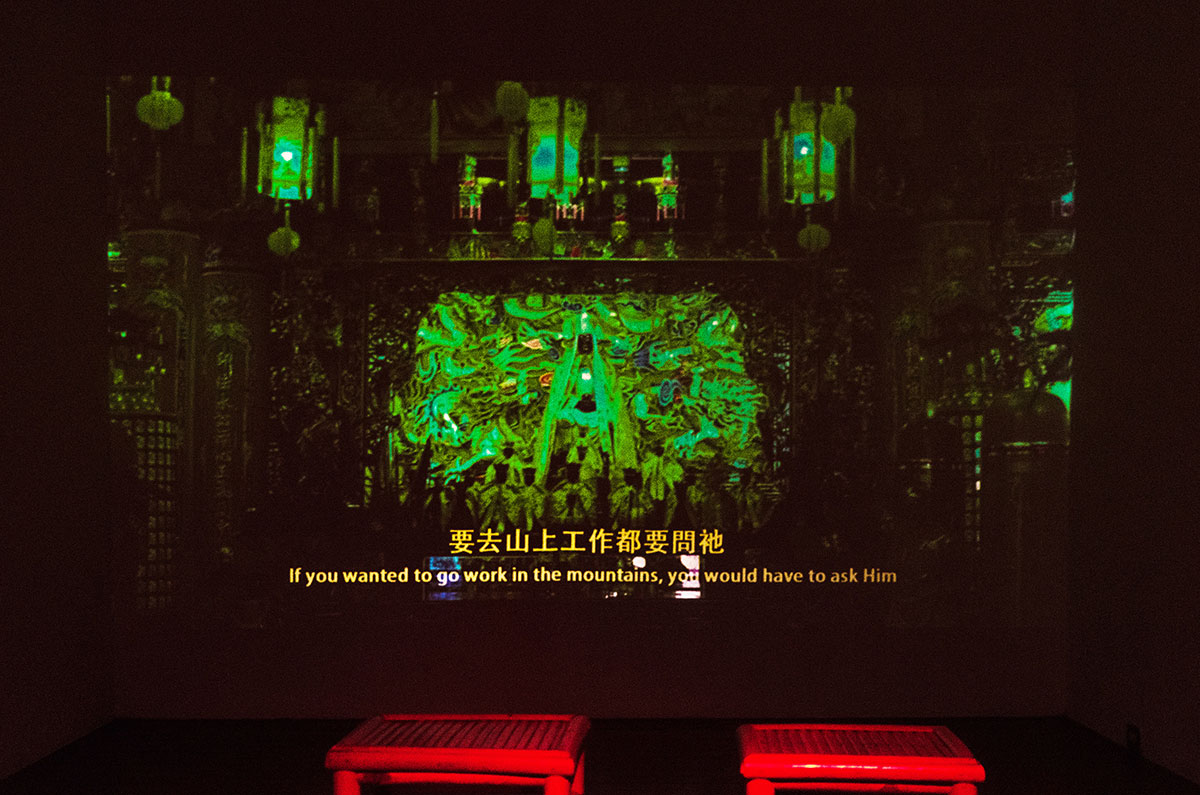LIANG Ting-Yu

The Elbow of Capture
- 2019, single-channel video, 14 min 12 sec.
- Courtesy of the artist.
Curatorial Perspective
In The Beheaded Stream Art Project, Liang Ting-Yu studies his hometown and uses it as a research base to explore its complex, diverse history and dark, gloomy cultural landscape. The geographic location of this place is in an area of low elevation mountains between Taoyuan and Hsinchu, which is currently inhabited by a mixture of ethnic communities, including the Hakka, the Atayal, the Ketagalan, the Taokas, and the Minnan (Hokkien). During an extensive period of the Qing rule, this area was in the section of the Tuniu Ditch (the boundary separating indigenous peoples and Han people), in which the topography changed rapidly from narrow flatlands and water source areas to a region of elevated foothills. This particular period also witnessed a historical process of competitions, integration, migration, marriage, and plunder among different ethnic communities, who were in constant negotiation with the colonial governments from different times. Liang utilizes oral histories, research of literature, geological surveys, field investigations to tombs and temples, as well as interviews with local land gods – in which case, he appeals to animist deities by tossing divination blocks – to construct an uncategorizable history. This is not a history of settler-type colonizers, nor a history subjectively written by ethnic or indigenous communities; and it certainly is not a projection of future national history. The work starts with the natural geological phenomena known as stream piracy and beheaded stream, and further combines elements from local cultural geography, such as tombs and death incidents, to portray a supernatural space beyond writing—one that has become so entangled with a place over generations that it has come to be perceived as the land god. This is also the most active scene of the sentient beings in the animist belief.
Creation Description
In the hills of northern Taiwan exist multiple ethnic groups that have interacted with one another. In geological terms, there are the stream piracy effect and beheaded stream terrain. Over the past nearly 100 years, ethnic groups have lived together in the axial area of the old Shimen basin. Within this complex geography, Liang Ting-Yu takes on the modern migration of “settlers,” with similarities to the narratives and memories forged in the settler-type colonial state, tracing the histories of five ethnic groups (Hakka, Atayal, Ketagalan, Taokas, and Hokkien) and the clan relationships in this area, as well as looking at the most complicated period when people became aware of the relationships among natural objects such as land, mountain ridges, valleys, and rocks. With graves, death events, and geographical factors, such as mountains and rivers, as the driving forces behind narratives, there is a recalibration of the position of narrator, with mutual adjustments of versions and perspectives to present the intersection and dynamic narrative of multiple ethnic groups and groups of things. In addition to the complexities of historical awareness and memories, there exists a kind of animistic superimposed universe.
The topographic and chromatographic arrangement of this work, which includes multi-channel video installation and display of objects, leads to an unpredictable atmosphere that involves the oral narratives of elders, while weaving together a dim history of memories, geography, and death events. Moreover, the complex and interactive viewpoints of five ethnic groups living in the hills of northern Taiwan are presented. The Death Valley and The Place of Headhunting are based on the viewpoints of indigenous Atayal elders. With canyon terrain and boundary areas at the core, the history of headhunting around Atayal communities and the rumors of headless ghosts, curses, and places of death are traced. Through the cross-perspective narrative of the Atayal and Hakka peoples is revealed overlapping landscapes and memories. In The Elbow of Capture, a geological phenomenon in the Takoham River (today’s Dahan River), Touliao, and Xizhou Mountain area is described. Once the Hokkien people arrived and began farming, there were frequent conflicts with indigenous peoples and memories of headhunting remain. The Graveyard and The Land of Red Soil trace the movements of the Taokas people of the Pocaal Community and the Ketagalan people of the Xiaoli Community from the terraces of Taoyuan and the Fengshan Valley of Hsinchu, respectively, based on tombstones scattered across the Yangmei, Xinpu, and Guanxi areas. Tombstones used as ditch covers call attention to the disappearance of boundaries between indigenous and Han Chinese communities. Following that, the graves and spirits left on the land became part of the negotiations among and survival of ethnic groups.

